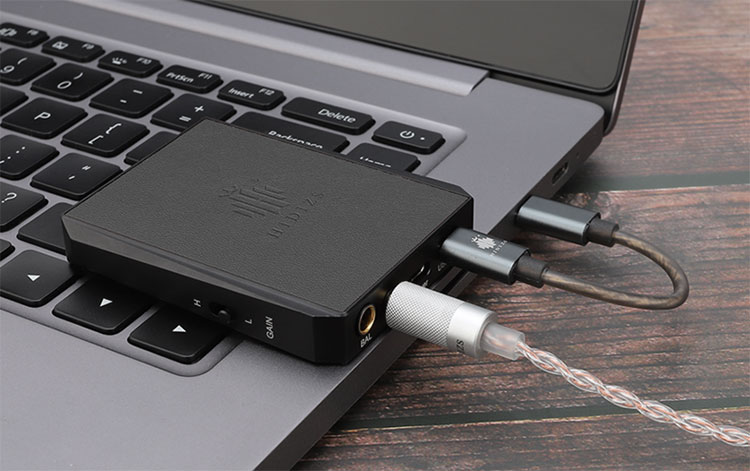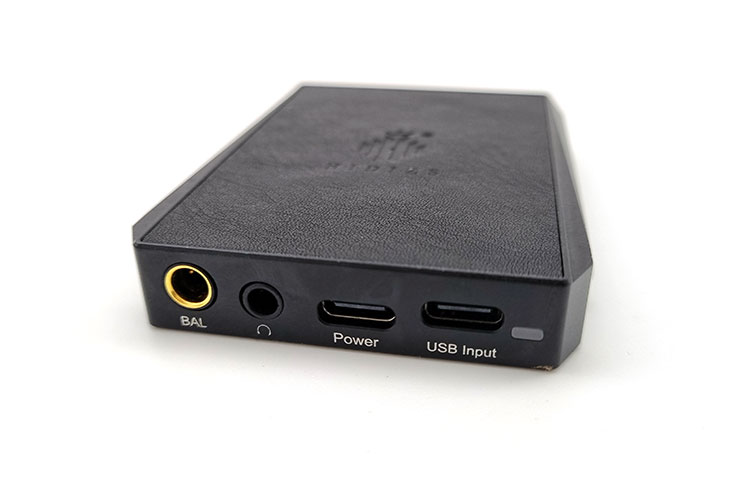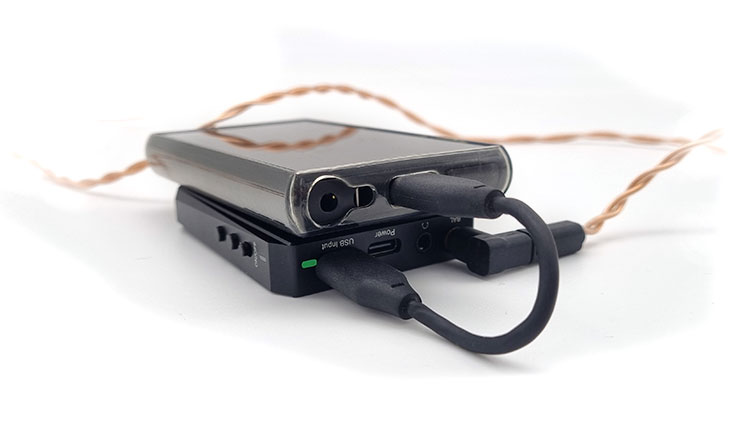The Hidizs DH80s is a compact portable ESS9281C implemented and MQA capable DAC and headphone amplifier. It is priced at $139.
Disclaimer: The Hidizs DH80s sent to us is a sample in exchange for our honest opinion. We thank the team at Hidizs for giving us this opportunity.
To read more about Hidizs products we have reviewed on Headfonics click here.
Note, this 2-page review follows our new scoring guidelines for 2021 which you can read up on here.
Eagle-eyed readers will notice that we covered the Hidizs DH80 earlier this year via Mike. This was a unique spin on a concept I had not seen since the CEntrance Glove A1 several years ago. A portable amplifier and DAC with a design purposed entirely around an integrated fitting with their AP80 or AP80 Pro DAPs.
This time around we have its sibling, the DH80s which carries many of the features of the DH80 but this time without the specific DAP fitting. This universal fit will appeal to anyone who wants a portable amplifier and DAC and not just an existing Hidizs DAP user.

Tech Highlights
Embedded deep within its unibody chassis, Hidizs has implemented an ESS9281C Pro DAC, and dual independent RT6863C op-amps.
According to Hidizs’ official website, the ESS9281C Pro DAC boasts improved power efficiency, a widened dynamic range, and minimal signal-to-noise measurements (116dB for both 3.5mm single-ended and 4.4mm balanced outputs). Hence, the DH80s is compatible with both DSD and MQA-formats, offering sampling rates as high as 32bit/384kHz.
Moreover, its RT6863C op-amp array offers enhanced amplification of up to 125mW+125mW into a 32Ω load in its 3.5mm single-ended output, and 210mW+210mW in its 4.4mm balanced output.
Pair that with a 1300mAh battery, and you have a portable amplifier that (allegedly) offers over 6-8 hours of playback. Tech-wise, the DH80s is no slouch when it comes to boasting technically impressive specs. But real-world performance is the real proof in the pudding.
Design
Aesthetically, the DH80s is a sleek and svelte portable DAC/Amp at 70×50×12mm. For ease of comparison, it is appropriately sized compared to its DAP forbear, the Hidizs AP80 Pro, a highly pocketable solution for outdoor listening.
The front faceplate is finished with a sheet of leather with the Hidizs logo embossed in its center. In addition, the DH80s’ design language borrows a few noteworthy cues from brands such as Astell & Kern, with angular corners that are distinctly achievable on CNC machining processes.
Moreover, its chassis is fabricated from black stainless steel with a satin finish; a pragmatic design decision that circumscribes the possibility of hairline scratches or scuffs as compared to a highly polished surface.
At just 68g, the DH80s was designed to complement or enhance one’s “on the go” audiophile rig without adding too much-unwanted weight. However, its black stainless steel does offer enough heft to inspire confidence in its build quality.
Battery-wise, the DH80s boasts a 1330mAh 3.7 Li-Polymer battery. According to Hidizs should last 6 hours on the balanced output, and 8 hours on the SE output. From daily real-world usage (1hr of listening on the daily commute per day), the DH80S was approximately 35 minutes shy of the company’s estimates. Battery performance is decent, but nothing to write home about.
To put it brusquely, the DH80’s premium design and build quality punches above its price-point significantly.
I/O
All the DH80s inputs are conveniently located and named accordingly at the bottom for ease-of-use when inter-operated with a playback soured connected to it.
From the left-hand side, the DH80s hosts a 4.4mm balanced output, and a 3.5mm single-ended output. Hidizs made the right call by opting for the 4.4mm standard instead of the 2.5mm balanced output; manufacturers are slowly distancing themselves from the legacy 2.5mm connector, slowly embracing the 4.4mm as the new normal.
On its right-hand side, there are two independent USB-C inputs: one for charging the device, and the other for receiving audible data from your current source.
While some may detest the inconvenience of having two independent inputs for both charging and data transfer, isolating them from one another lowers the amount of SNR or electro-magnetic interference (EMI) that can potentially pollute or distort the audible signal being received by the DH80s.
Above all, being able to charge your device whilst using it is another additional feature that is attained from splitting both data and power outputs into two distinct sections.
Most importantly, there is a LED indicator at the far right-hand side of the inputs/output section. The LED indicator responds to the amount of audible data being received by the unit as outlined: Red: 44.1k-48k / Blue: 88.2k-384k / Pink: MQA.
The implementation of the LED indicator is highly intuitive and easily understood upon first seeing the unit.
Controls
Given its primary feature set, the DH80s only adopts a few rudimentary controls in its interface, On the left-hand side of its chassis, there is a toggle on-and-off switch for both low, and high-gain. For multiple use scenarios, having a mid-gain toggle would’ve made the DH80s are a more adaptable unit.
On the right-hand side, there are independent volume controls with 30 steps, and a power-on/off toggle switch. To avoid any confusion, Hidizs has opted to include a second LED indicator to reflect the device’s charging status.
Unfortunately, it only lights up green when it is being charged and stays unlit during day-to-day usage, which doesn’t tell us anything about how much power it is currently holding; the information it conveys doesn’t justify its existence.
Packaging & Accessories
Hidizs has stuck to its roots; offering every accessory that is necessary for out-of-the-box usage, leaving no stone unturned. Inside the package, you’ll find a generous package that covers most of the bases including
- DH80s unit
- Type-C USB charger
- USB-A converter
- Type-C to Type-C cable
- Warranty card
- User manual
Sound Impressions
Summary
In an ideal setting, a DAC’s job is to recreate any sonic data that was lost from compressing an analog recording into a digital one.
Additionally, the op-amp stage’s primary purpose is to provide adequate power to drive any pair of headphones or IEMs without altering its sound profile. Nevertheless, a multiplicity of factors can result in modifications down the signal path.
To my ears, the DH80s has a slower decay/roll-off that accentuates the low-end, distinctly in the mid-bass section. Treble energy is slightly blunted by the DH80s; any hiss or sibilant peaks are eliminated.
Most importantly, there is a prominent boost in the entire midrange, from its lower mids to the upper mids. Our human biology naturally processes mid-tones far better than any other frequency band. Hence, mid-range clarity is enhanced with the DH80s.
Timbre
Because of its non-linear tuning, the low-end response is slightly more voluminous, albeit tastefully enhanced without an overemphasis on punch or rumble. The midrange boost helps to bolster male and female vocals substantially.
However, the treble region’s sharper overtones are dampened (just a touch). All these noteworthy changes naturally create a timbre that oscillates between the realm of neutral and cabin-like warmth (more of the former).
Staging & Dynamics
Arguably the biggest strength of the DH80s is its imaging capabilities. Unlike portable dongles that draw their power from your source’s battery, the DH80’s independent battery allows it to shuttle in more power into either 3.5mm SE or 4.4mm balanced output.
How does it fare in the real world? Lateral width and depth between instruments and vocals are noticeably wider; the perceived space between them is much deeper without sounding artificially distant. Complex tracks fared noticeably paired on IEMs paired with the DH80s.
As alluded to earlier, dynamics from the DH80’s qualitative improvements to the bass regions allow for a wonderful contrast between a clean midrange and the guttural yet restrained low-end punch. Hence, the juxtaposition between those two regions gives it a mild V-shape flavor, albeit very mild.
Click on page 2 below for pairings and select comparisons







